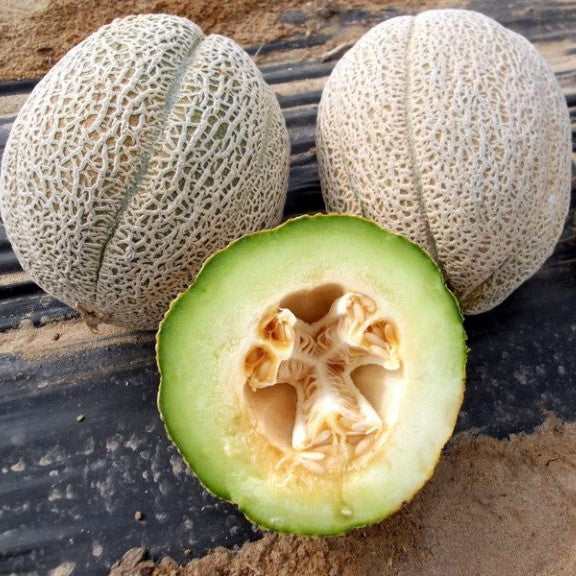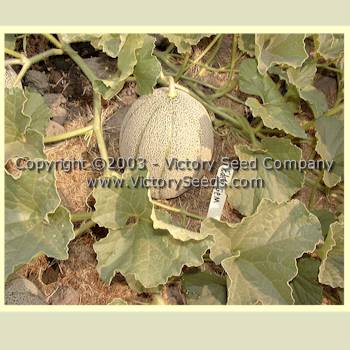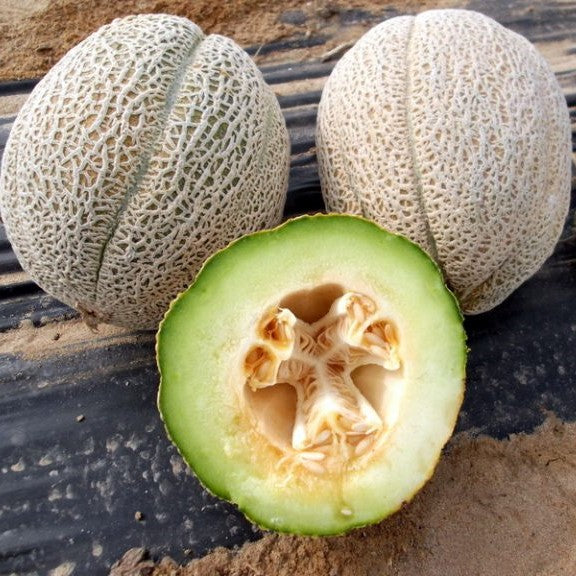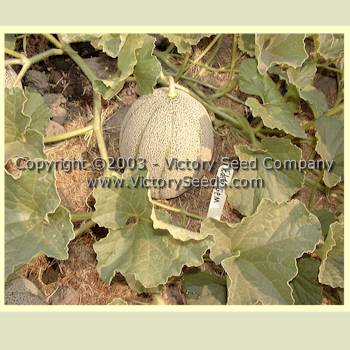Eden Gem (Rocky Ford Green Flesh) Melon
Eden Gem (Rocky Ford Green Flesh) Melon
Regular price
$2.95 USD
Regular price
Sale price
$2.95 USD
Unit price
per
Shipping calculated at checkout.
Couldn't load pickup availability
Eden Gem
Cucumis melo L. Reticulatus Group
Currently unavailable, we suggest Charentais and Heart of Gold as alternatives.
90 days — 'Eden Gem' melons weigh two to three pounds, are heavily netted, slightly ribbed, and prolific. Its green flesh is very sweet and tasty. A very productive variety.
'Eden Gem', also known as 'Gem of Eden', 'Green Fleshed Rocky Ford', 'Improved Rocky Ford', and 'Genuine Rocky Ford', is a strain or selection of the old and well known variety, 'Netted Gem'. The 'Rocky Ford' melon was so improved over its progenitor that by the 1930s, the original 'Netted Gem' was no longer commercially available.
The exact history of the variety is obscured by time, as well as by dispute. Reportedly, in 1885, J. W. Eastwood of Colorado planted one-half acre of 'Netted Gem' seed he received directly from W. Atlee Burpee Company.[2] We also know that the old D. V. Burrell Seed Growers, of Rocky Ford, Colorado, began carefully selecting from melons of uniform size, and commercially introduced the variety in 1899.[1] There are about 33 seeds per one gram packet.


Planting Instructions:
The seeds can be directly sown in spring after the soil has warmed or started indoors three to four weeks before your last expected frost.
Indoors, plant two to three seeds per pot, ½ inch deep, thinning to best plant. Do not disturb roots.
Outdoors, plant six to eight seeds, ½ inch deep, in hills spaced four feet apart. Transplant or thin to three plants per hill.
Young plants are cold sensitive and some cover protection at nights may be required. Mulch or cultivate to control weeds. Although the name or description of this variety refers to a modern company's name, the seed we are offering is in no way sourced from, "owned by" or connected with that company. The name is simply the historically accurate, common name for the variety giving credit to the seedsmen that originally released it. Informational References:
Indoors, plant two to three seeds per pot, ½ inch deep, thinning to best plant. Do not disturb roots.
Outdoors, plant six to eight seeds, ½ inch deep, in hills spaced four feet apart. Transplant or thin to three plants per hill.
Young plants are cold sensitive and some cover protection at nights may be required. Mulch or cultivate to control weeds. Although the name or description of this variety refers to a modern company's name, the seed we are offering is in no way sourced from, "owned by" or connected with that company. The name is simply the historically accurate, common name for the variety giving credit to the seedsmen that originally released it. Informational References:
- "List of American Varieties of Vegetables for the Years 1901 and 1902," by W. W. Tracy, Jr., United States Department of Agriculture, 1903.
- "Vegetables of New York: The Cucurbits," New York State Agricultural Experiment Station, 1935.
Explore our vegetable collections:
[ Artichokes | Asparagus | Beans | Beets | Broccoli | Sorghums | Brussels Sprouts | Cabbage | Cantaloupe | Carrots | Cauliflower | Celery | Collard Greens | Corn | Cucumber | Eggplant | Endives | Gourds | Kale | Kohlrabi | Leeks | Lettuce | Mesclun Mix | Mustard Greens | Okra | Onions | Parsley | Edible Pod Peas | Garden Peas | South Peas | Hot Peppers | Mild Peppers | Pumpkins | Radishes | Rapini | Rhubarb | Salad Greens | Salsify | Summer Squash | Winter Squash | Swiss Chard | Tomatillo | Tomatoes | Dwarf Tomato Project | Turnips | Watermelons ]


